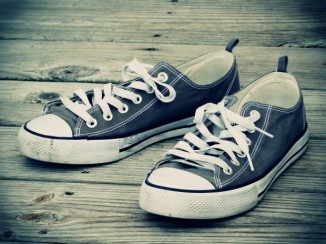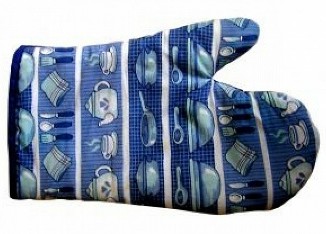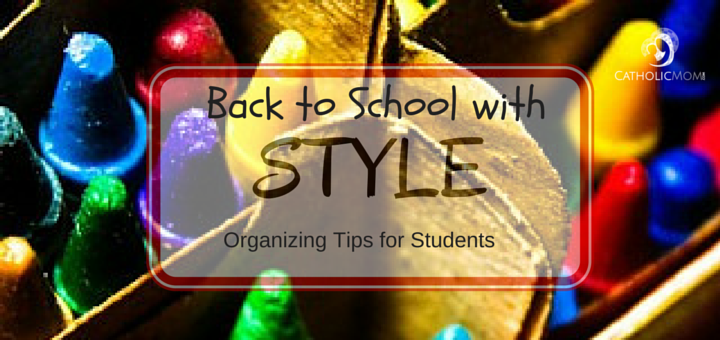If you’ve been following these posts for the last couple of weeks, by now you know that a positive outlook and confidence in your own abilities are the two key parts of the "S" in the STYLE acronym (Start with Successes). In addition, those attributes are necessary ingredients for developing a plan based on your personal and organizational styles. And if you Take it Slow, using simple strategies like Give it Five! and Don’t put it down, put it away! you'll see steady progress and avoid feeling overwhelmed.
Which brings us to Y: Yes, it Has a Home.
 Photo:
Dodgerton Skillhause via Morguefile
Photo:
Dodgerton Skillhause via Morguefile
When it comes to getting organized, home is simply where an item belongs. Books have homes on bookshelves. Shoes may have a home on the floor of the closet. Pots and pans find homes in kitchen drawers, or hanging from racks over a kitchen island.
Very often, clutter develops because items lack homes. Consequently, things are left lying out (I need to see it or drop and run) or improperly stashed away (I know I put it somewhere, cram and jam), because we don't know what to do with them. Sometimes, an overload of stuff (I love stuff) or a dearth of time (I love to be busy) compounds the problem.
The key to successful retrieval (not to mention less clutter) lies in successful storage or finding homes that make sense.
Location rule #1: Store items where they are used. Storing an item close to where it's used (e.g., oven mitts near the oven) not only makes sense, but it also makes it easier to remember where we put things and, therefore, to find them when we need them. If we know our "somewhere" is limited to the storage spaces in the area where the item is typically used, we reduce our search parameters from "it could be anywhere" to "it's somewhere in this drawer." Quite a substantial reduction -- and one that requires much less time and energy when we need to find something, even if that something is (still) just stuffed in a drawer.
 Photo: Freepik.com
Photo: Freepik.com
Location rule #2: Store like items together. This key combines storage and retrieval. If we use Location rule #1 and store an item in a place that makes sense, we're more likely to remember where we put it, which makes it easier to retrieve it. Storing like items together piggybacks on Location rule #1, making it easier to find things because of the associations we make (e.g. I'm putting the oven mitts in the drawer with the cookbooks). These associations provide visual cues which act as retrieval cues. In other words, making a connection between, say, the cookbooks and the oven mitts, helps the I know I put it somewhere organizer to remember which somewhere is the one he or she chose for both items.
Use retrieval cues. Some things can be used in a variety of spaces, making Location rule #1 challenging. And while opening the drawer and seeing the cookbooks can provide the "aha" moment that reminds us where we stored the oven mitts, it's even better if we can figure out which drawer to open in the first place. To do this, the I know I put it somewhere organizer can benefit from taking a page out of the I need to see it organizer's book, and using strategies like labeling, color-coding and see-through storage. Unlike the I need to see it organizer, the I know I put it somewhere organizer can put these see-through, labeled or color-coded containers behind closed doors (because out of sight isn't out of mind for I know I put it somewhere folks), or they can simply use these strategies and containers in the first place. Clear plastic bins come in many sizes and colors and can be incredibly helpful in revealing those "safe" storage places to I know I put it somewhere organizers.
In organizing, as in real estate, location is key.
For printable information sheets
about containers and the styles,
go to Organizing by STYLE and
click on the CHARTS tab at the top of the page.
Copyright 2015 Lisa Hess
Logo background image: "Unageek color" by Unageek (2013) via Morguefile. Text added in Canva.
About the Author

Lisa Hess
Transplanted Jersey girl Lisa Lawmaster Hess is the author of a blog compilation, three novels, and three non-fiction books, including the award-winning Know Thyself: The Imperfectionist’s Guide to Sorting Your Stuff. A retired elementary school counselor, Lisa is an adjunct professor of psychology at York College of Pennsylvania. She blogs at The Porch Swing Chronicles, Organizing by STYLE, and here at Catholicmom.com. Read all articles by Lisa Hess.



.png?width=1806&height=731&name=CatholicMom_hcfm_logo1_pos_871c_2728c%20(002).png)
Comments